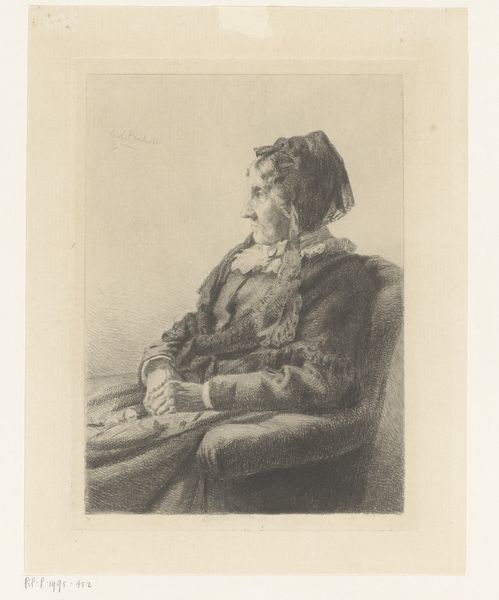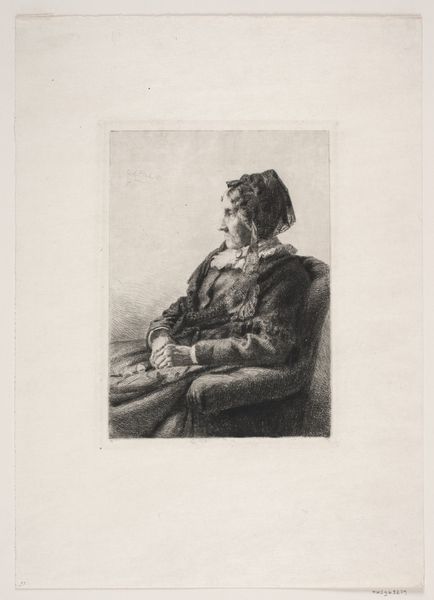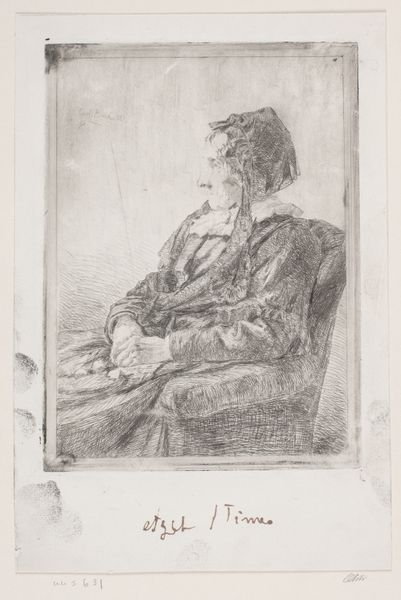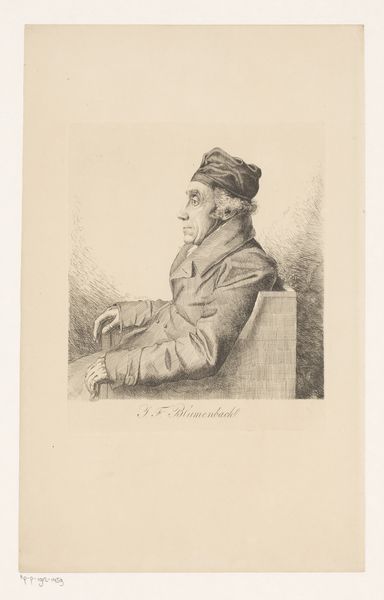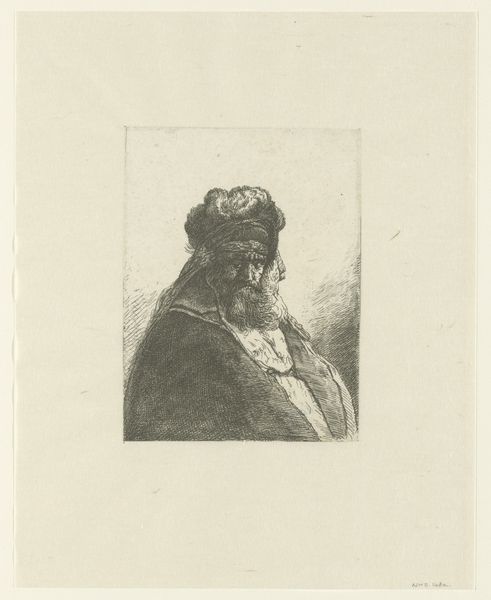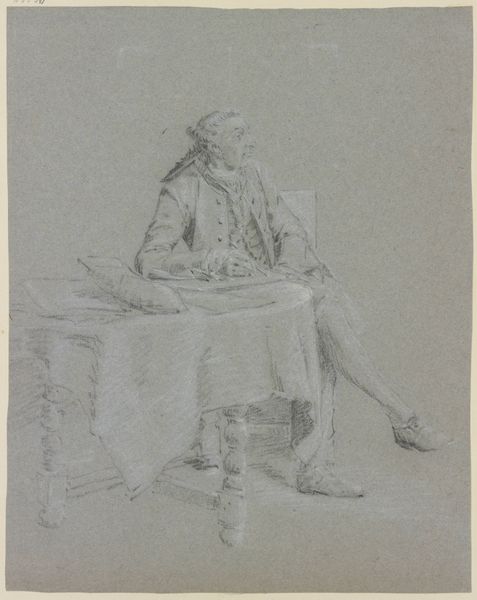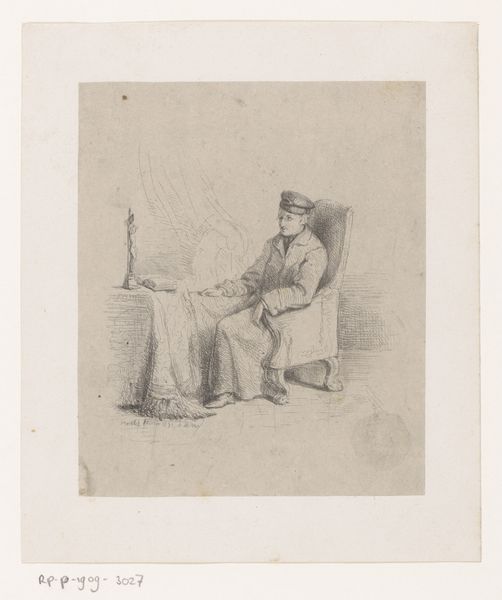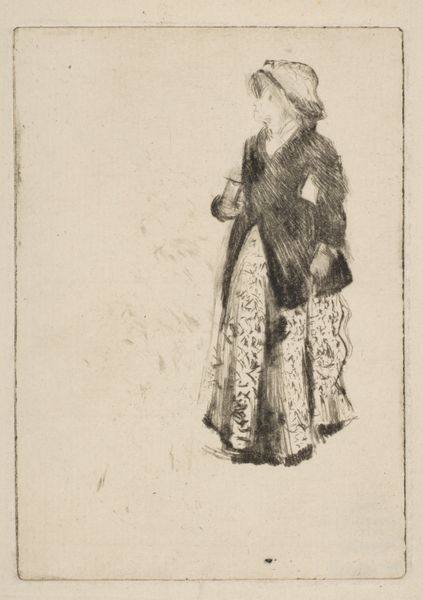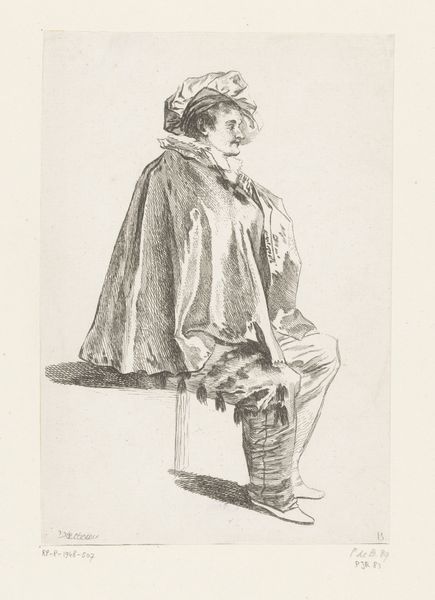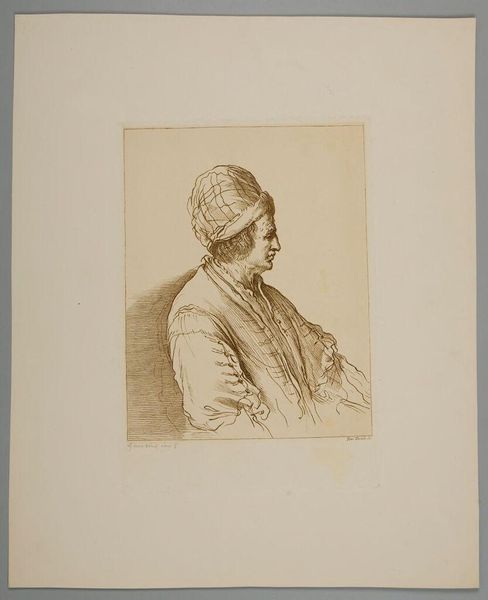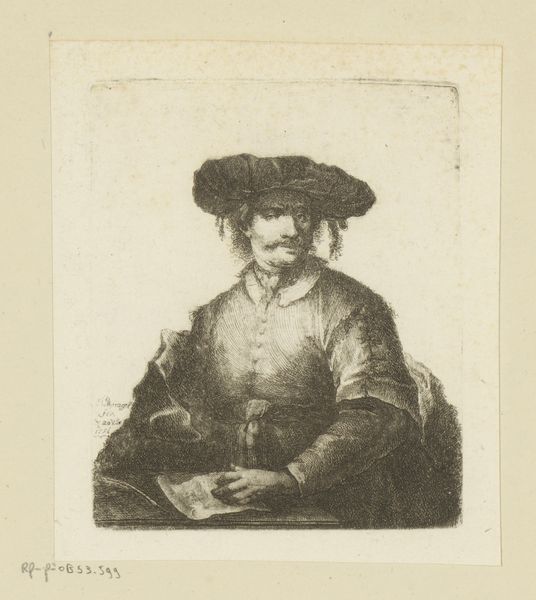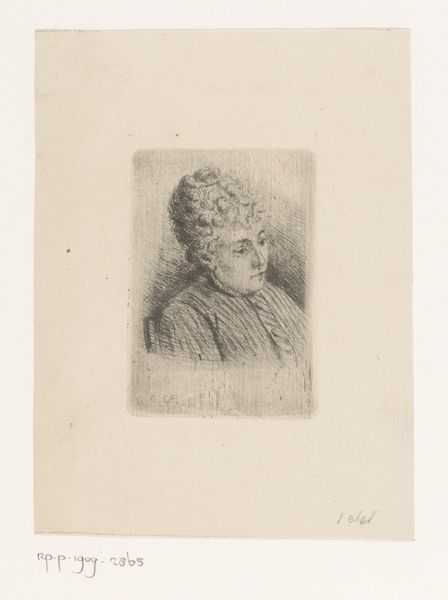
print, etching, paper
#
portrait
# print
#
etching
#
paper
#
realism
Dimensions: 179 mm (height) x 132 mm (width) (plademaal)
Editor: Here we have Carl Bloch’s "Dameportræt," from 1881, an etching on paper. It depicts a seated woman in profile. There's a kind of stark simplicity to it. What strikes you about this print? Curator: Looking at this print, I’m drawn to the material processes and labor embedded within it. Etching, as a medium, necessitates a series of steps involving acid, metal plates, and printing presses, reflecting a distinct mode of production. How do you think this method, requiring time and technique, contrasts with our current mass production and digital imaging? Editor: That’s a great point. I hadn't thought about the process that much, but now it's apparent how deliberate and meticulous the artist was. Curator: Exactly. Consider, too, the social context: In 1881, the rising middle class consumed art, creating a demand for portraiture like this. Do you see any clues here about the social standing of either the artist or the sitter in the work’s material qualities? The paper, the details of the etching…? Editor: The details seem so precisely done, suggesting skill and the resources for quality materials. It makes me think it was not an everyday product meant for just anyone. Curator: Indeed. And let’s think about how this print challenges the hierarchy separating 'high art' and craft. Bloch was celebrated, yet here, the focus shifts to repetitive manual labor required to produce an etching like this one. By understanding it as an object of production and consumption, how does our interpretation shift? Editor: That perspective complicates things, in a good way. It's not just a picture; it is labor frozen in time! Curator: Precisely. We move beyond just aesthetics to examine its construction and cultural placement. The art resides not just in its image, but in the conditions that allowed its existence. Editor: I’m beginning to see how examining materiality provides a richer understanding of the artwork's meaning beyond the surface image! Thank you. Curator: My pleasure. Remember to keep an eye on how the art object gets made.
Comments
No comments
Be the first to comment and join the conversation on the ultimate creative platform.
